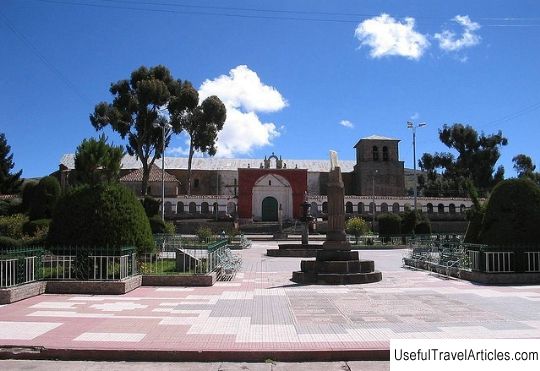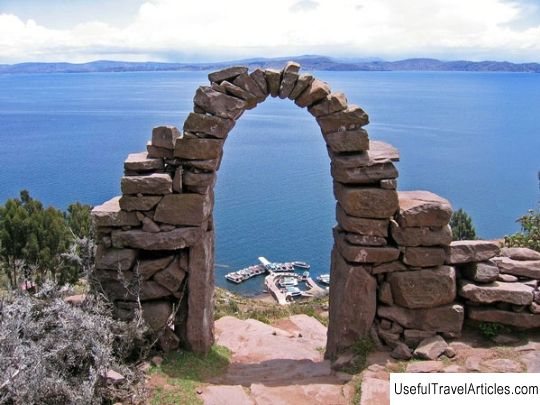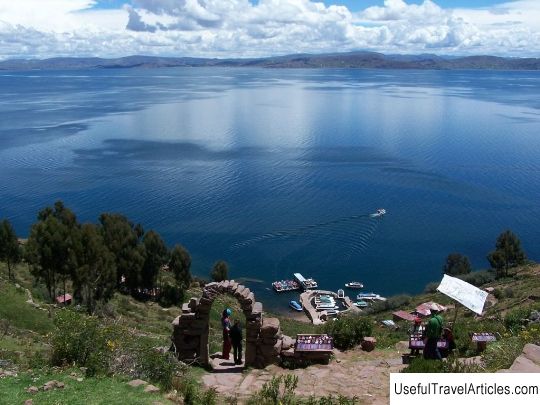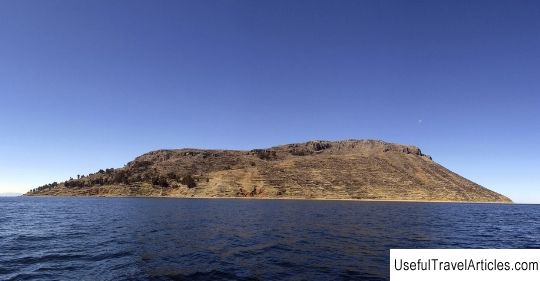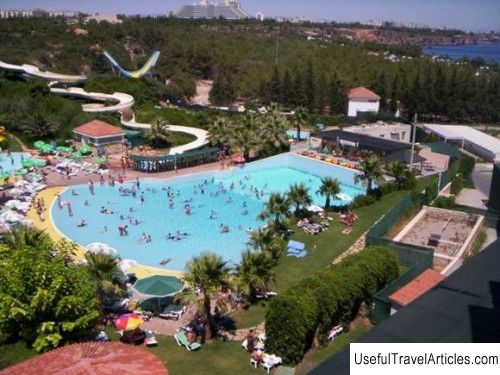Lake Titicaca description and photos - Peru: Puno
Rating: 9,5/10 (2902 votes) 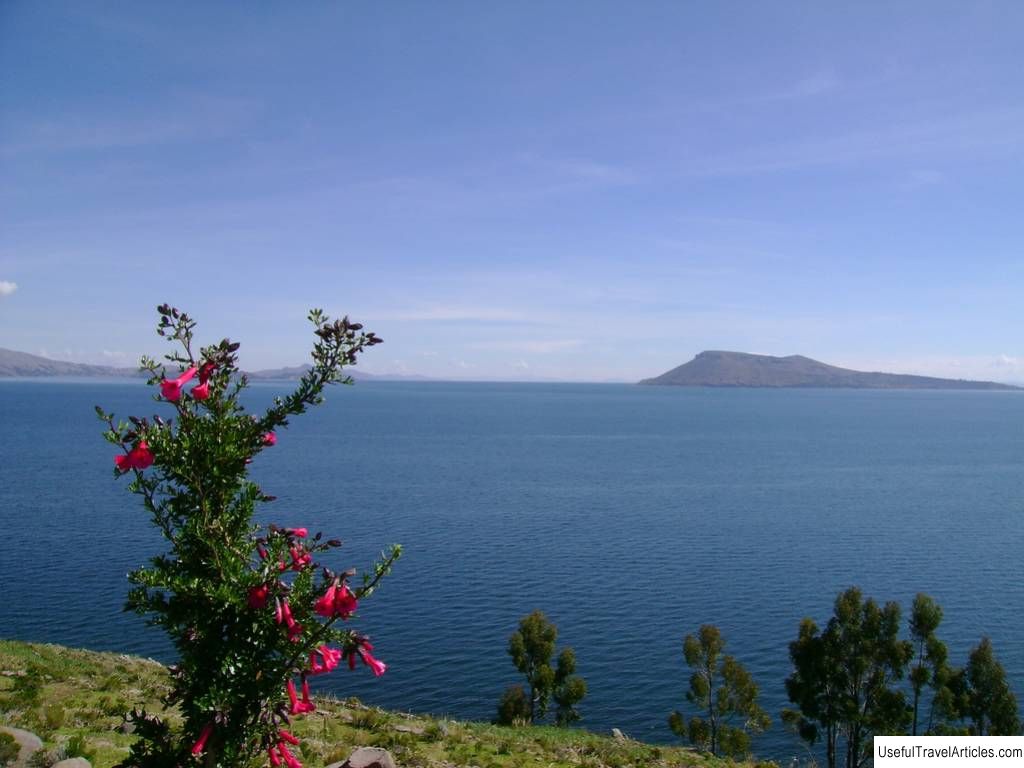
Lake Titicaca description and photos - Peru: Puno. Detailed information about the attraction. Description, photographs and a map showing the nearest significant objects. The title in English is Titicaca. Photo and descriptionThe navigable lake Titicaca, located at an altitude of 3,856 meters above sea level, with an area of 8,370 sq. km and a depth of 280 m, is common to Peru and Bolivia. Its shores and small islands such as Amantani and Taquile are home to the indigenous Aymara and Quechua tribes, whose ancestors lived here long before the Incas. The bulk of the inhabitants of the shores of Lake Titicaca live in traditional Indian villages, where Spanish is not considered the main language, and where ancient myths and beliefs persist today. On the shores of Lake Titicaca to the southeast of the Collao plateau, there is a beautiful city Founded in 1666 by the Spaniards under the name Villa Rica de San Carlos de Puno, Puno is also called the 'Folklore Capital of Peru'. 14 km from the city of Puno, Where the giant Totora reeds grow massively on the shores of the lake, the Uru ethnic group lives on makeshift floating islands. Their ancestors many centuries ago, who called themselves `` people of black blood '', were forced to flee to the lake due to the persecution of the ruler of the Inca empire Pachacuteca. Today, out of 3000 Uru Indians, 200-300 people live on 40 floating islands, the rest have moved to land. These people are mainly engaged in fishing and hunting for waterfowl, create new floating islands, build houses on them, pass on their beliefs and customs from generation to generation. On the shores of Lake Titicaca, you can see vicuna, alpaca, llama , guinea pig, fox, diving duck, andean cat and flamingo. Its slightly brackish waters are rich in fish, including several species of crucian carp, trout and catfish. You can also see the giant frog known as the Titicacus whistler, and it is the only habitat for this species. The lake flora is represented by 12 varieties of aquatic plants, including the California reed tohora, the green Chara algae and several species of duckweed. The average annual temperature of this area is 13 ° C, with large fluctuations in temperature due to the high altitude location. Precipitation increases during the southern summer (December to March), which is why flooding and frequent storms threaten the shores during this time of the year.        We also recommend reading Maritime Museum in Mariehamn description and photos - Finland: Aland Islands Topic: Lake Titicaca description and photos - Peru: Puno. |
